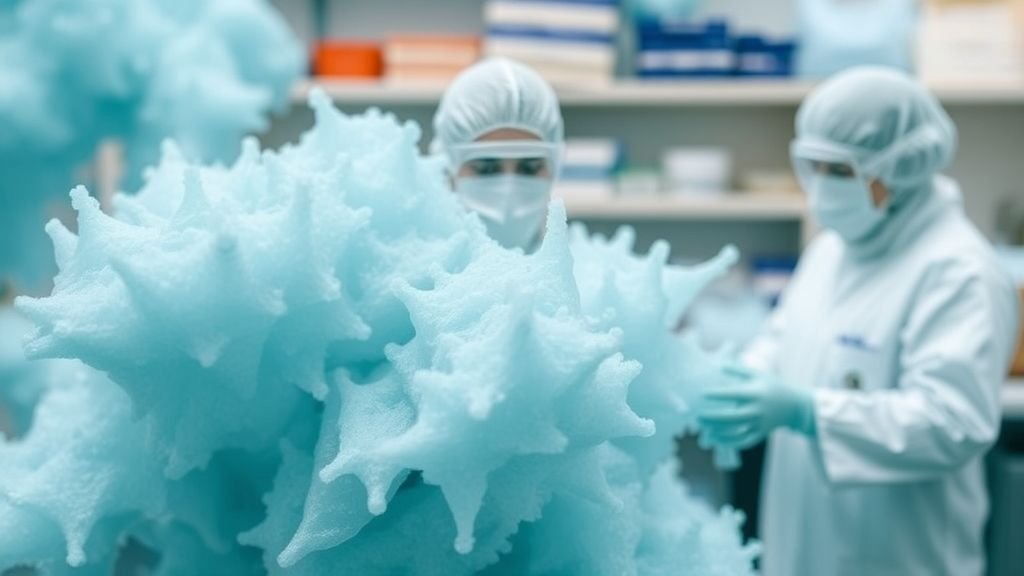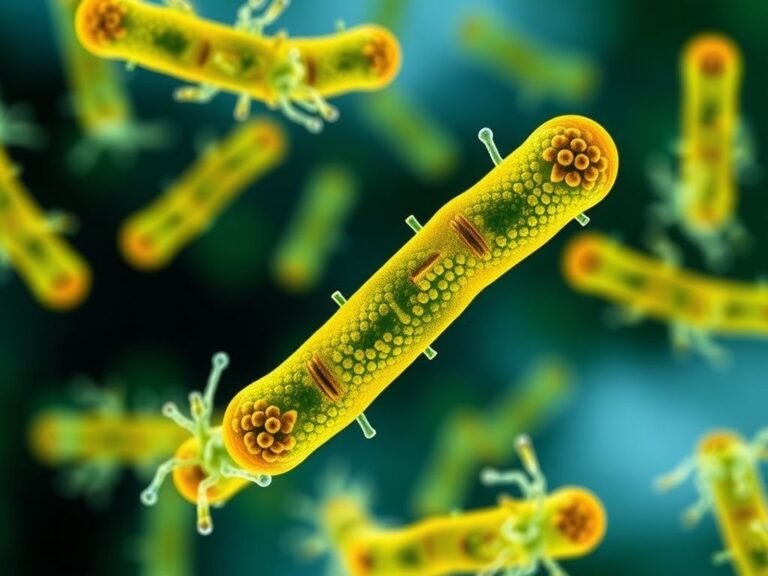
How a Lethal Fungus Might One Day Protect Millions
A fungus once linked to ancient tomb curses and mysterious deaths is now offering hope in the fight against cancer.
Researchers at the University of Pennsylvania have discovered a new class of molecules derived from Aspergillus flavus , a mold historically tied to contaminated crops and deadly infections. Through genetic engineering and chemical modification, scientists transformed compounds from this toxic fungus into powerful cancer-fighting agents that rival FDA-approved leukemia drugs.
This discovery not only brings us closer to more effective treatments but also highlights how nature — even its most dangerous corners — can hold life-saving secrets.
⚰️ The Dark Past of Aspergillus Flavus
Aspergillus flavus has long been feared for its harmful effects. Known for contaminating food supplies and producing dangerous toxins, it’s also been linked to unexplained illnesses and deaths in historical settings.
In the 1920s, after archaeologists opened King Tutankhamun’s tomb, several members of the expedition died unexpectedly — sparking rumors of a “pharaoh’s curse.” Some researchers later speculated that airborne fungal spores , possibly from A. flavus, may have played a role.
The mystery deepened in the 1970s when ten out of twelve scientists who entered the tomb of Polish King Casimir IV died shortly afterward. Investigators found high levels of A. flavus spores inside the tomb, raising concerns about the health risks posed by ancient molds.
Now, decades later, science is turning this deadly legacy into something hopeful.
💊 A New Class of Anti-Cancer Molecules: Asperigimycins
The breakthrough came when researchers isolated ribosomally synthesized and post-translationally modified peptides (RiPPs) — a type of compound rarely found in fungi — from A. flavus.
These newly discovered molecules were named asperigimycins , after the fungus they originated from. What makes them special is their unique ring-like structure , which gives them strong biological activity.
When tested on leukemia cells, two of the four asperigimycin variants showed potent cancer-killing effects . One variant was even enhanced with a lipid molecule similar to those found in bee royal jelly, boosting its effectiveness to match established chemotherapy drugs like cytarabine and daunorubicin .
🔑 Unlocking the Cellular Gateway: How It Works
To understand why these compounds work so well, researchers studied how they enter cancer cells.
They identified a key gene called SLC46A3 , which plays a crucial role in allowing asperigimycins to penetrate cell membranes. This gene helps move the molecules out of lysosomes — tiny compartments within cells that normally break down foreign materials.
Dr. Qiuyue Nie, lead author of the study, explained:
“This gene acts like a gateway. It doesn’t just help asperigimycins get into cells — it could be the key to delivering other therapeutic cyclic peptides too.”
This finding opens the door to developing more targeted therapies using natural compounds.
🧬 Genetic Detective Work Reveals Hidden Potential
To find more fungal RiPPs, the team analyzed over a dozen strains of Aspergillus , comparing their chemical outputs with known RiPP structures.
They found that one particular protein in A. flavus was responsible for producing RiPPs. When they turned off the related genes, the production of these compounds stopped completely.
This innovative method — combining metabolic profiling and genetic analysis — could help scientists uncover more fungal-based medicines in the future.
🧫 Targeted Attack on Leukemia Cells
Further experiments revealed that asperigimycins interfere with microtubule formation , a critical process in cell division. By disrupting this mechanism, the compounds effectively halt the uncontrollable growth of cancer cells.
Importantly, the treatment had minimal impact on healthy cells or other types of cancer like breast, liver, or lung cancer — suggesting a highly specific and potentially safer therapy .
🌿 Nature’s Hidden Pharmacy
Beyond the immediate medical promise of asperigimycins, the research points to a much bigger opportunity: the vast untapped potential of fungal compounds .
The researchers found similar genetic clusters in other fungi, hinting that many more bioactive molecules are waiting to be discovered.
Dr. Sherry Gao, senior author of the study, said:
“Fungi gave us penicillin. Now we’re seeing that they may offer even more powerful tools for medicine. It’s up to us to explore, learn from nature, and build better solutions.”
🧪 What Comes Next?
The next phase involves testing asperigimycins in animal models to assess safety and efficacy. If successful, human clinical trials could follow, bringing the world one step closer to a new class of naturally derived anti-cancer drugs .
As Dr. Nie put it:
“We’re just scratching the surface. This is an unexplored region of biology with tremendous potential.”
The full research paper, titled “A Class of Benzofuranoindoline-Bearing Heptacyclic Fungal RiPPs with Anticancer Activities,” was published on June 23, 2025 , in the journal Nature Chemical Biology .
🔗 Read the study here
The study was led by a multidisciplinary team of scientists from several leading institutions across the U.S. and Europe, including:
- University of Pennsylvania School of Engineering and Applied Science
- Rice University
- University of Pittsburgh
- The University of Texas MD Anderson Cancer Center
- Washington University School of Medicine, St. Louis
- Baylor College of Medicine
- University of Porto, Portugal
This groundbreaking work was made possible through funding from major research organizations, such as:
- U.S. National Institutes of Health (NIH) – Grants R35GM138207, R35CA274235, R35GM128779
- University of Pennsylvania
- Welch Foundation – Grant C-2033-20200401
- Houston Area Molecular Biophysics Program – NIH Grant T32 GM008280
- Cancer Prevention and Research Institute of Texas (CPRIT) – RR220087, RR210029
- National Science Foundation (NSF) – OAC-2117681, OAC-1928147, OAC-1928224
The research involved contributions from over 30 scientists and collaborators, including Qiuyue Nie, Fanglong Zhao, Xuerong Yu, Mithun Madhusudhanan, Caleb Chang, Siting Li, Rory Sharkey, Bryce Kille, Andy Xu, Chunxiao Sun, Hongzhi Zeng, Shuai Liu, Dishu Zhou, Xin Yu, Kevin Yang, Sandra Figueiredo, Maria Zotova, Zichen Hu, Alan Du, Dongyin Guan, Rui Tang, Todd Treangen, Jin Wang, Pedro Leão, Yang Gao, Junjie Chen, Peng Liu, Hans Renata , and others.





